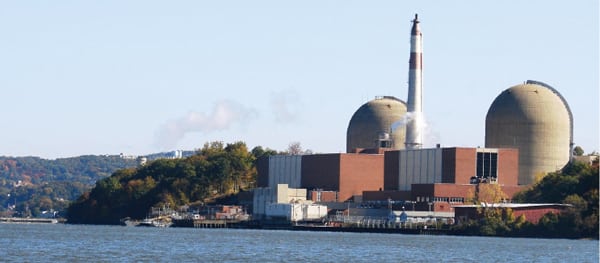NRC to Implement Lessons Learned from Fukushima
The U.S. Nuclear Regulatory Commission (NRC) in October directed staff to begin implementing seven safety recommendations put forth by the federal body’s Near-Term Task Force on lessons learned from the nuclear accident at Tokyo Electric Power Co.’s Daiichi power plant in Japan’s Fukushima prefecture last March. The recommendations affecting all 104 nuclear reactors (Figure 1) in the U.S. could be in place by April 2014, but experts have urged that implementation of the rules be expedited.
 |
| 1. Lessons learned. The Nuclear Regulatory Commission (NRC) will begin implementing at all 104 U.S. reactors recommendations made by a task force that was commissioned to identify lessons learned from the Fukushima nuclear accident in Japan. The accident has renewed NRC scrutiny and public pushback against older plants like Indian Point (shown here) in Winchester County, N.Y. Courtesy: Entergy |
The Task Force released its recommendations in July last year, providing a proposal to the NRC, which selected the seven recommendations that could be immediately implemented. According to the NRC, the mitigation strategy requirements could use performance-based standards in any new or revised regulations when possible.
The seven recommendations cover loss of all AC power at a reactor that could prompt a “station blackout,” reviews of seismic and flooding hazards, emergency equipment, and plant staff training. They prescribe that:
- The NRC require licensees to reevaluate and upgrade as necessary design-basis seismic and flooding protection of structure, systems, and components for each reactor in operation.
- The NRC require licensees to perform seismic and flood protection walkdowns to identify and address plant-specific vulnerabilities and adequacy of monitoring and maintenance for protection features. These include watertight barriers and seals in the interim.
- The NRC order licensees to provide reasonable protection for equipment from effects of design-basis external events. It could also require licensees to add equipment to address multi-unit events.
- The NRC strengthen station blackout mitigation capability at all operating and new reactors for design-basis and beyond-design-basis external events.
- The NRC order licensees to include reliable hardened wetwell vents in BWR Mark I and Mark II containments.
- The NRC strengthen and integrate onsite emergency response capabilities such as emergency operating procedures and severe accident management guidelines.
- The NRC require facility emergency plans to address prolonged station blackout and multiunit events.
The measures are critical even though a similar sequence of events in the U.S. is unlikely because “existing mitigation measures could reduce the likelihood of core damage and radiological releases,” NRC Commissioner George Apostolakis told attendees at a recent Eurosafe conference in November.
The Great East Japan Earthquake—a 3-minute, magnitude 9.0 temblor—generated a series of tsunami waves as tall as 38.9 meters (130 feet), killed more than 25,000 people, and set off the worst nuclear disaster in 25 years. At Daiichi, a 15-meter (49-foot) tsunami inundated and disabled the offsite power supply (12 of 13 backup generators located in the basements of the turbine buildings) of three units, interrupting critical cooling functions. The tsunami also disabled their heat exchangers and electrical switchgear. All three units consequently saw explosions that damaged their reactor buildings. It was also later established that the cores of Daiichi 1, 2, and 3 had largely melted within the first three days of the crisis.
“The accident was not of extremely low probability—that is, it was not unthinkable,” Apostolakis told attendees. The tsunami hazard was “underestimated,” critical equipment was located in lower plant elevations, and a flooding risk could have identified existing vulnerabilities, he said. But, he added, “Rather than spending resources on analyzing extremely rare events, we should focus on ensuring the correctness of the design basis.”
—Sonal Patel is POWER’s senior writer.